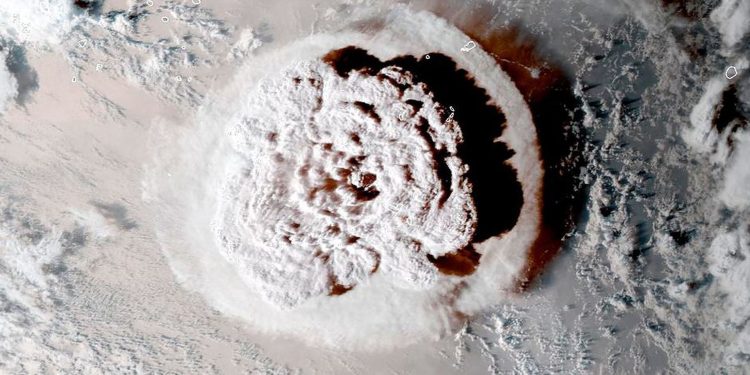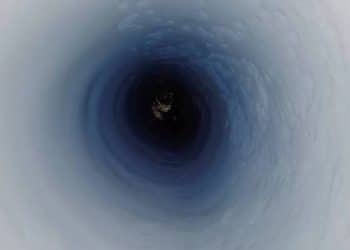In January 2022, the world witnessed the most powerful volcanic eruption ever recorded with modern instruments. This colossal explosion, originating from the Hunga Tonga-Hunga Ha’apai underwater volcano in the South Pacific, left scientists with critical questions about its precursors. Recently, researchers have identified a puzzling seismic signal that preceded the eruption, offering fresh insights into the mechanics of such catastrophic events.
A Sudden Burst Beneath the Waves
On January 15, 2022, the eruption of Hunga Tonga-Hunga Ha’apai unleashed an immense force, ejecting over 10 cubic kilometers of volcanic material and releasing enough water vapor into the stratosphere to fill 58,000 Olympic-sized swimming pools. With a Volcanic Explosivity Index (VEI) of at least 5, it ranked alongside historic eruptions like Mount St. Helens in 1980 and Mount Vesuvius in 79 CE. The eruption caused shockwaves, tsunamis, and even the fastest underwater currents ever recorded, resulting in fatalities in Tonga and as far as Peru.
But what if this disaster could have been anticipated?
The Mysterious Signal: A Seismic Precaution
A new study has revealed that two distant monitoring stations—located in Fiji and Futuna, some 750 kilometers (466 miles) away—detected a peculiar seismic wave 15 minutes before the eruption. This wave, classified as a Rayleigh wave, moves along Earth’s surface and is often associated with volcanic eruptions or earthquakes. However, its occurrence before this eruption hinted at something extraordinary.
Scientists believe the seismic wave was triggered by a fracture in the oceanic crust beneath the volcano. This fissure allowed seawater to rush into contact with magma, sparking a violent interaction and ultimately leading to the massive explosion. The Rayleigh wave, which traveled rapidly across vast distances, marked the moment when this underwater instability began.
Why Early Detection Matters
The detection of this signal holds profound implications for disaster preparedness. According to Mie Ichihara, a volcanologist at the University of Tokyo and co-author of the study, “Early warnings are very important for disaster mitigation. Island volcanoes can generate tsunamis, which are a significant hazard.”
Indeed, the eruption’s tsunamis wreaked havoc across the Pacific, highlighting the urgent need for advanced warning systems. The researchers suggest that recognizing similar seismic signals in real-time could provide crucial minutes for issuing emergency alerts, potentially saving lives.
Unlocking the Volcano’s Secrets
The research sheds light on the hidden processes beneath underwater volcanoes. Lead author Takuro Horiuchi explains, “Many eruptions are preceded by seismic activity. However, such seismic signals are subtle and only detected within several kilometers of the volcano.” The Rayleigh wave preceding this eruption was an exception, reaching instruments hundreds of kilometers away, signaling a seismic event of extraordinary magnitude.
Horiuchi and his team propose that unusually large movements within the Earth’s crust began during this precursor event, setting the stage for the eruption. By studying these signals, scientists hope to decode the mechanisms of future volcanic activity.
Preparing for the Next Eruption
As volcanic activity becomes more predictable through research, the potential for saving lives grows. While the Rayleigh wave from the Hunga Tonga-Hunga Ha’apai eruption couldn’t be felt by humans, its detection demonstrates the capability of modern instruments to act as an early warning system.
Looking ahead, Ichihara emphasizes the importance of real-time analysis: “At the time of the eruption, we didn’t think of using this kind of analysis in real-time. But maybe the next time there is a significant eruption underwater, local observatories can recognize it from their data.”











